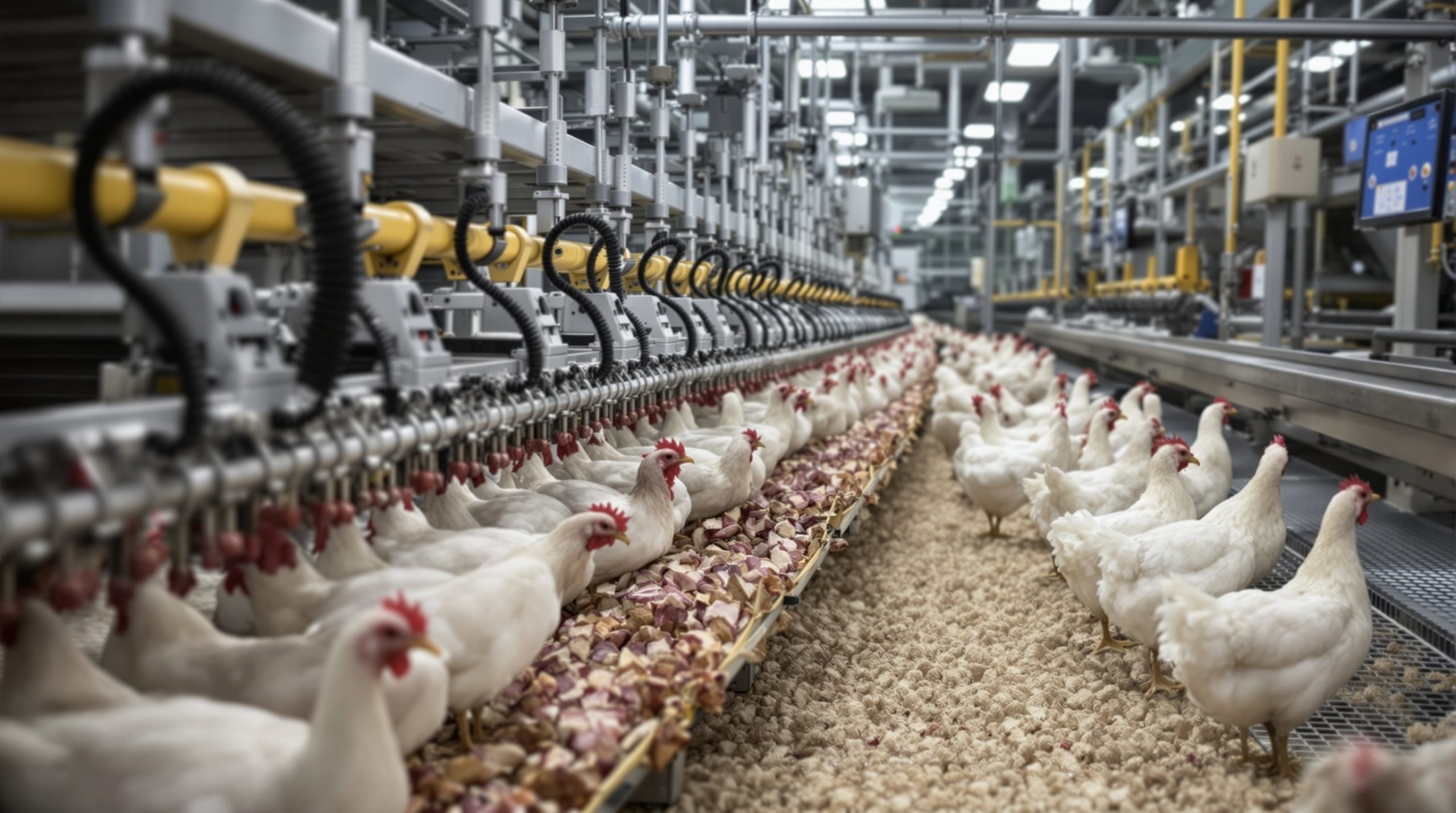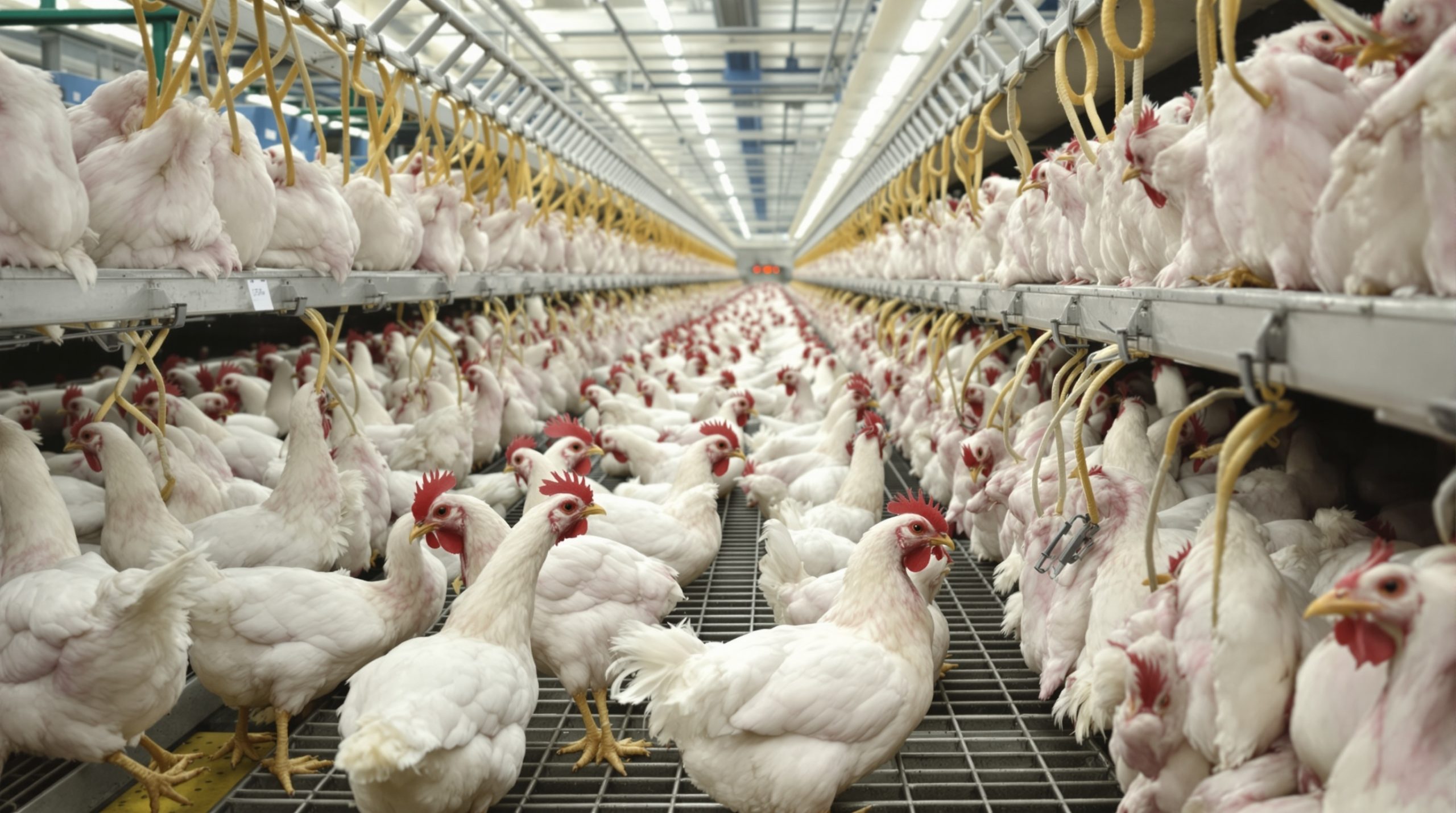The poultry processing industry stands at a critical crossroads, with economic pressures from international trade policies and evolving labor dynamics pushing companies toward greater automation. As tariffs reshape global supply chains and labor shortages persist across food manufacturing sectors, poultry processors are increasingly looking to technological solutions to maintain profitability and production capacity. This shift represents not just a response to immediate challenges but a fundamental transformation in how poultry products move from farm to table in the 21st century economy.
The Dual Pressures Reshaping Poultry Processing
The poultry industry has long operated on thin margins, making it particularly vulnerable to external economic forces. Two significant pressures have accelerated the industry’s move toward automation: the implementation of international tariffs affecting both equipment costs and export markets, and persistent labor availability challenges that have reached crisis levels in many processing regions.
Tariff Impacts on Poultry Operations
Recent years have seen significant trade tensions resulting in tariffs that affect poultry processors in multiple ways. Import tariffs on steel and aluminum have increased the cost of processing equipment and facility construction, while retaliatory tariffs from trading partners have restricted access to lucrative export markets for finished poultry products.
When countries impose tariffs on U.S. poultry exports, processors face immediate margin compression. For example, China’s tariffs on U.S. poultry during trade disputes reduced export volumes by over 80% in affected years. These market restrictions create excess domestic supply, driving down wholesale prices and forcing processors to find efficiency improvements to remain profitable.
The Escalating Labor Shortage Crisis
Perhaps even more pressing than tariff concerns is the chronic labor shortage affecting meat processing operations nationwide. The poultry industry has traditionally relied on labor-intensive processes, with plants often employing hundreds or thousands of workers in rural communities. Several factors have contributed to this shortage:
- Demographic shifts in rural communities
- Increased competition for workers from other industries
- Immigration policy changes affecting workforce availability
- The physically demanding and repetitive nature of processing work
- Pandemic-related workforce disruptions that never fully recovered
A 2022 industry survey revealed that poultry processors were operating with 15-20% fewer workers than desired, forcing reduced line speeds and limiting production capacity despite strong market demand. This labor gap creates both immediate operational challenges and long-term strategic implications for the industry.
Automation as a Strategic Response to Market Forces
Faced with these twin challenges, the poultry industry has accelerated investment in automation technologies that reduce labor requirements while increasing production efficiency. This transition represents a significant shift in the industry’s operational model.
The Economics of Automation Decisions
The decision to automate is ultimately driven by return on investment calculations. When labor costs increase or worker availability decreases, the economic equation shifts in favor of automation. Similarly, when tariffs increase equipment costs, the ROI timeline extends, potentially delaying automation initiatives.
For poultry processors, the calculation has increasingly favored automation for several key reasons:
- Labor costs have risen approximately 5-7% annually in many processing regions
- Worker reliability concerns affect production consistency
- Automated systems can operate for extended hours without breaks
- Quality consistency improves with properly calibrated automated systems
- Reduced workplace injuries and associated costs
- Increased production speeds and throughput
While the initial capital investment in automation technology can be substantial—often in the millions of dollars for comprehensive systems—many processors report ROI timeframes shortening from 5+ years to 2-3 years as labor challenges intensify.
Key Automation Technologies Transforming Poultry Processing
The automation revolution in poultry processing encompasses a wide range of technologies, from relatively simple mechanical systems to sophisticated AI-powered solutions. Several areas have seen particularly rapid advancement:
Computer Vision and AI-Driven Cutting Systems
Perhaps the most significant breakthrough in poultry automation has been the development of computer vision systems that can accurately analyze each bird’s unique anatomy and guide cutting robots with millimeter precision. These systems have transformed deboning operations—traditionally among the most labor-intensive processes—by reducing labor requirements by up to 70% while improving yield and consistency.
Modern vision-guided systems can make decisions in milliseconds, adjusting cutting paths based on the size and shape of each individual bird. This level of adaptability was previously possible only with human workers, making it a genuine technological breakthrough for the industry.
Automated Material Handling and Logistics
Beyond the processing line itself, automation has transformed how products move through facilities. Automated guided vehicles (AGVs), conveyor systems, and robotic palletizers have reduced the need for manual material handling while improving traceability and reducing product damage.
These systems become particularly valuable when labor is scarce, as they can eliminate dozens of positions that involve repetitive lifting and movement tasks, allowing processors to focus available workers on higher-value activities.
Data Integration and Process Optimization
The modern automated poultry facility increasingly operates as an integrated data ecosystem. IoT sensors monitor everything from equipment performance to product temperature, feeding real-time information to systems that can make automatic adjustments to maximize efficiency and ensure food safety.
This data-driven approach allows for continuous optimization of processes in ways that would be impossible in traditional labor-intensive operations, creating a competitive advantage that extends beyond simple labor cost reduction.
Case Studies: Automation Success Stories in Poultry Processing
The impact of automation is perhaps best illustrated through real-world implementation examples:
Major US Processor Responds to Labor Shortages
One of America’s largest poultry processors invested $50 million in automation technologies across multiple plants after experiencing chronic labor shortages that limited production capacity. The company reported that automated deboning systems allowed them to increase production volume by 15% while reducing labor requirements by 25% in those process areas.
Despite tariffs increasing equipment costs by approximately 12%, the ROI calculation still strongly favored automation given the persistent inability to staff facilities adequately. The company reported that the automation investment paid for itself in under 3 years, primarily through labor savings and increased throughput.
Mid-Sized Processor Leverages Automation for Export Markets
A mid-sized processor facing both labor challenges and export market disruptions from tariffs invested in automated cutting and packaging systems specifically designed to meet exacting specifications for Asian export markets. This targeted automation allowed the company to maintain export premium pricing despite tariff headwinds by ensuring exceptional product consistency that commanded market premiums.
The specialized automation reduced labor needs by 40% in the export processing lines while improving product yield by 3%—a significant efficiency gain in an industry where margins are often measured in pennies per pound.
The Future of Poultry Processing: Balancing Automation and Human Work
As automation technologies continue to advance, the poultry processing workforce is undergoing a significant transformation. Rather than eliminating human employment entirely, the industry is evolving toward a hybrid model where automation handles repetitive physical tasks while human workers focus on quality assurance, system monitoring, and processes requiring judgment and flexibility.
Workforce Evolution and Training Challenges
This transition creates both challenges and opportunities for the processing workforce. While traditional line positions may decrease, new roles emerge in equipment operation, maintenance, and monitoring. These positions typically offer better working conditions, reduced physical strain, and higher wages, but require different skill sets.
Forward-thinking processors are investing in workforce development programs to help existing employees transition to these new roles, recognizing that institutional knowledge remains valuable even as the nature of the work changes.
Regulatory Considerations in Automated Facilities
As automation increases, regulatory frameworks are evolving to address new food safety and inspection paradigms. Traditional inspection models based on human visual inspection are being adapted for facilities where machine vision systems may be making thousands of quality decisions per minute.
Processors implementing advanced automation must work closely with regulatory agencies to develop appropriate oversight mechanisms that ensure food safety while allowing for technological innovation.
Conclusion: Navigating the Automation Transition
The poultry processing industry’s move toward automation represents a necessary adaptation to the realities of modern economic conditions. Tariff pressures and labor challenges have accelerated this transition, creating both opportunities and complexities for processors of all sizes. As technology continues to evolve, the most successful operators will be those who strategically implement automation to address specific operational challenges while developing their workforce to leverage these new capabilities. The future of poultry processing will likely be defined not by complete automation but by thoughtful integration of technology and human expertise to create more efficient, consistent, and resilient production systems capable of withstanding the economic pressures of a changing global marketplace.



